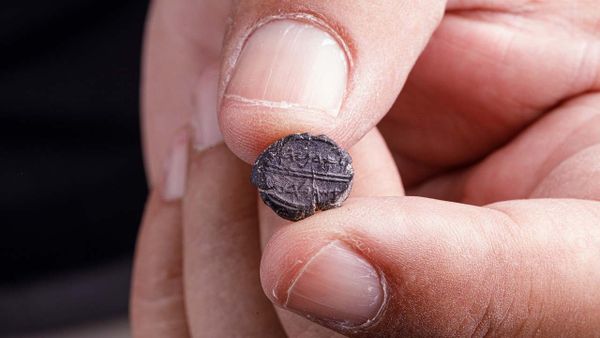Anyone familiar with stories about Jesus, even those who have never read the gospels for themselves heard of Pontius Pilate who ordered the crucifixion. Besides the New Testament Pilate was also mentioned by Josephus at the end of the 1st century CE. Yet, skeptics have doubted the existence of Pilate for centuries until a stone with his name and title was unearthed in the 1960’s in the ruins of coastal Caesarea in Israel. Now some archaeologists believe they may have found Pilate’s ring!
The ring itself was found by Professor Gideon Forster back in 1969 during the excavation of the Herodion. Herodion is one of Herod’s famous fortresses in Judea, very impressive and not far from Bethlehem. Many believe that this fortress was Herod’s final resting place. The ring was among hundreds of small items taken for study from the dig. When it was first examined it revealed a depiction of a krater, a wine vessel, and an inscription, but it was not legible. Recently, with the help of modern technology, scientists were able to read the inscription. It was a Greek inscription ΠΙΛΑΤΟ (PILATO), which could be the name of Pontius Pilate!
But of course, nothing is that simple when it comes to investigating the past and trying to figure it out by putting together all the pieces. The spelling PILATO is problematic. In Latin Pilate’s proper name would have been PONTIUS PILATUS, and if it was to be spelled by using Greek letters, it would have been not PILATO, but ΠΙΛΑΤΟΣ (PILATOS) with Sigma on the end. If the ring was meant to say “belonging to Pilate” then it would have spelled out ΠΙΛΑΤΟΥ (PILATU) literally “of Pilate” in Greek. But the ring does not show any damaged or missing letters, PILATO is all it says. This alone casts some doubt in connecting the ring to the famous character of the Passion stories.
It is easy to see why some archeologists want to believe this ring belonged to Pontius Pilate. Pilate is not at all a common name in Judea, not like John, Joseph, or Mary. The location fits, the era and the dating fits as well. From roughly 26 to 36 CE Pilate was the appointed governor, of the province of Judea, which was the eastern fringes of the Roman Empire. The design of the ring is a bit too elaborate for an average citizen. Most rings from this era, such as ones worn by Roman soldiers are crafted in a similar style but usually simple in design. On the other hand, it was made of copper which was hardly proper adornment for a wealthy governor.
A solution for the unusual spelling of the governor’s name may be that ΠΙΛΑΤΟ is a Greek transliteration, not a translation, but a phonetic sounding out of Latin name – PILATUS. The ring bears Pilate’s name, but that does not mean it was ever worn by him. Signet rings were used as seals by clerks, and some administrator may have simply used this ring on Pilate’s behalf. This would explain the copper and the unusual spelling. This relic found at Herodion may not be Pontius Pilate’s personal ring, but it may still be a tangible artifact that confirms Pilate’s rule in Judea as it was described in the stories of Jesus' crucifixion. This may be another durable piece of history, a fascinating artifact that adds to the puzzle of history and that confirms the accuracy of gospel accounts.
Sources: Haaretz, NY Times, Biblical Archaeology











Member discussion